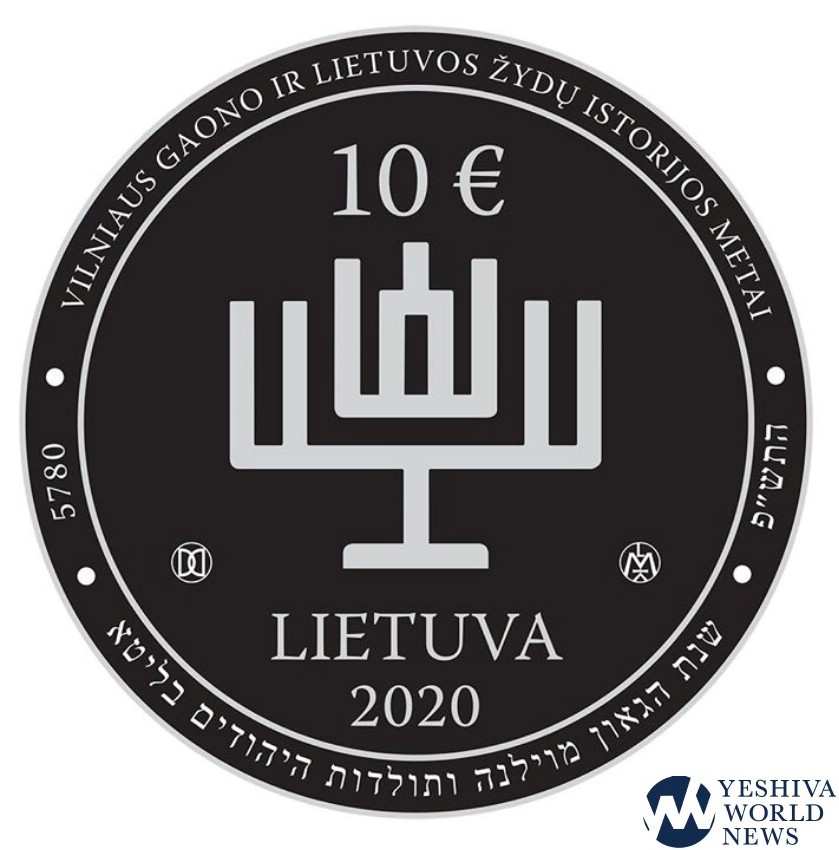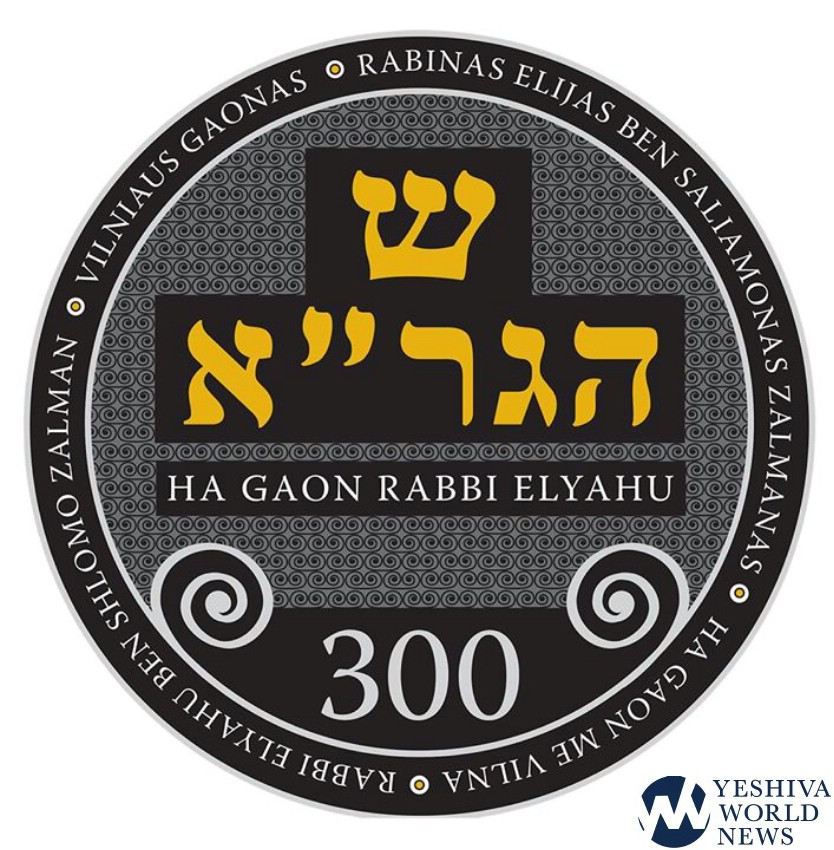According to a report released by the Lithuanian Jewish Community website, the Bank of Lithuania is going to release a new coin commemorating the 300th anniversary of the birth of the Vilna Gaon ZT”L. the release of the new coin is set for 2020.
The website reports the coin will bear an inscription in Yiddish and Lithuanian, the phrase ‘Vil, Nor Goen,’ which is a Yiddish pun meaning: if you want, you, too can become a genius, or gaon (sounds like ‘Vilner Gaon’).
On the back of the coin, there will be a ‘shin’, which has the gematria of 300. The shin is also connected to the many portraits of the Gaon seen in his tefilin. Under the ‘shin’ is written ‘HaGra’.
The letters shin and HaGra are emphasized in gold using tampographic minting techniques. The Gaon’s full title and name, Rabbi Eliyahu ben Shlomo Zalman, circle the edge of the reverse side in Lithuanian and Hebrew.
The coin is a €10 and is scheduled to be released in the second quarter of next year. The coin was designed by Viktorija Sideraitė-Alon, Jūratė Juozėnienė and Albinas Šimanauskas.

(YWN Israel Desk – Jerusalem)












4 Responses
Lithuania is trying to make money off of Jews worldwide who want to get hold of that coin
YWN is missing a key part of this story. The stylized menorah isn’t pashut. Can’t believe they left that part out.
It seems nice on the surface, but with closer examination falls short, and is even disturbing.
We appreciate nice gestures, however, if good will is limited to mostly gestures and niceties, and lacking commensurate action, one has to wonder if such things are not attempts at diversion, obfuscation, and deception.
The old Vilna Jewish cemetery, at Shnipishok, is still facing the imminent threat of being built upon, ה’ ירחם. Reparations for property seized in the WWII era, etc., in Lithuania, are sorely lacking. This has been covered in the past here (for just one example, http://www.theyeshivaworld.com/news/general/1653942/kever-of-the-chayei-adam-and-thousands-of-other-kevarim-in-danger.html) on multiple occasions.
Are we to be satisfied with token gestures, tokenisms as this coin, when such major issues are still outstanding and sore?
There are also issues re the design of the coin – see comprehensive analysis at http://defendinghistory.com/widespread-dismay-as-lithuanian-gov-s-gaon-year-is-launched-by-coin-incorporating-symbol-beloved-of-the-antisemitic-far-right/100190
Yes, there have also been some areas of valuable cooperation by Lithuania, for which we give them full credit and salute them for. However much still needs to be done. We need to keep the focus on substance beyond symbolic gestures.
There have been similar coins from the Czech Republic (Maharal of Prague) and Slovokia (Hasam Sofer). Given the enthusiastic collaboration of the Lithuanians during World War II (n.b. a country could help the Germans while opposing the holocaust, e.g. Finland, as apparently the Gestapo wasn’t allowed to murder local Jews if the pro-German locals objected), it seems more than a bit hypocritical of LIthuania to be honoring past of its heritage that they worked so hard to destroy. Since commemorative coins don’t circulate (in practice), buying the coin is just a subsidy to the issuing government.